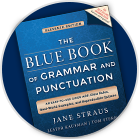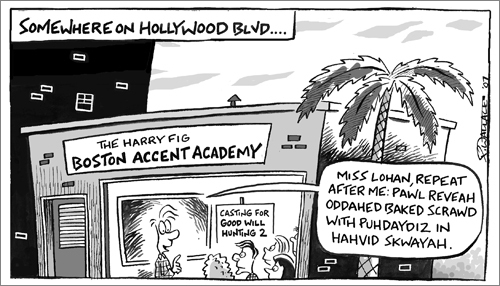|
Americans share a common language, but as in other countries, not all people speak it the same way. The U.S. has its own family of dialects that differ by region within its 3.8 million square miles.
People establish a dialect when they live together within set social or geographical boundaries over time. As they use language with limited outside influence, they develop characterizing words, grammar, syntax, and expressions. They also typically form a dialectical accent.
A dialect can even evolve so far as to become a different language. For example, the fifth century German invasion of England brought with it the Germanic Anglo Saxon dialect. As the invaders settled and became separated from their mother country, the dialect continued to fuse and form with surrounding speech until it no longer resembled German at all. Rather, it continued emerging into the English we now know.
The United States has many iterations of English, and different sources categorize them in separate ways. Several sources commonly identify fourteen main regional dialects in America. Estimates of subdialects within those primary groups can vary.
While we would like to explore them all, for our current discussion, we will group the main dialects into large, overarching regions— Southern, Northern, and Western American English—with just a few supporting examples.
Southern
American Southern English is perhaps most recognized for its distinctive drawl with longer vowel pronunciations. Another regional distinction can be the dropping of the final r of a word before another word that begins with a vowel (e.g., greater idea is pronounced great-uh idea).
Southern English might also be identified by colloquialisms such as using done as an auxiliary verb (I done already reminded you about the yard work) and using been instead of have been in present perfect constructions (I been building this cabinet for about two weeks).
Two subdialects of Southern include patois such as Virginia Piedmont and Yat. Perhaps the most well-known subdialect, Virginia Piedmont is recognizable by its dropped r from words such as far (pronounced faa), the pronouncing of both pen and pin as pin, and the drawl that produces sounds such as PAY-et for pet.
Influenced by Louisiana French and indigenous to the New Orleans region, Yat draws its name from the colloquial expression where y’at? Those who speak in the dialect might be spotted by their pronunciation of the word curl as COY-ul.
Northern
American Northern English includes dialects from New England (e.g., Boston, Rhode Island), New York and the Mid-Atlantic (e.g., Baltimore, Philadelphia), Inland Northern (e.g., Chicago, Detroit), and the U.S. Midland (Ohio, Nebraska, Missouri).
In Boston, as with Virginia Piedmont, you may hear the dropping of the r from words such as car (caa). Dissimilar to elsewhere in the U.S., depending on who’s speaking, father (FAW-thuh) and bother (baa-thuh) don’t always rhyme. You might also hear the word wicked in place of very and references to a tonic (TAWN-ic) for a soft drink.
In certain boroughs of New York (New Yawk), you might hear WAW-duh for water, gonna for going to, and awf for off.
In Philadelphia and surrounding areas, one may hear h-dropping as in YOO-men for human. The word water might also be pronounced as WOO-ter. Some Philadelphians are known to refer to the chocolate sprinkles on ice cream as jimmies as well.
Many Americans can identify Chicagoans by how they refer to their hometown: shi-CAW-go. Other Chicago-isms include gym shoes for sneakers, I got dibs for I have first access, da for the, and pop for soda. They also withdraw money from a cash station.
In St. Louis, you might hear for pronounced as far: What are you acting like that far?
Western Dialect
Perhaps because it was settled last by European immigrants on different settlement routes, the American West is less distinct in its dialect than the South and the North.
With close to 40 million people (12 percent of the U.S. population), California has developed its own forms of English, but an identifying regional tongue is yet to be defined. Its most discernible pattern of speech may be the Valley Girl vernacular popularized in the 1980s. The lingo included using like as filler between words and expressions such as gnarly, awesome, totally, and gag me with a spoon.
Other subdialects include New Mexican, Utahan, and Wyomese English.
A Forever Rich Stew of Expression
In American English, the pot is large and the spices are many. Just a few other dialects you may hear as you travel our land might be Cajun, Latino and "Spanglish," Pennsylvania Dutch, and Yeshiva. Each brings with it a color and a sound that remind us of the endless ways people use language to forge identities and leave creative imprints.
|





